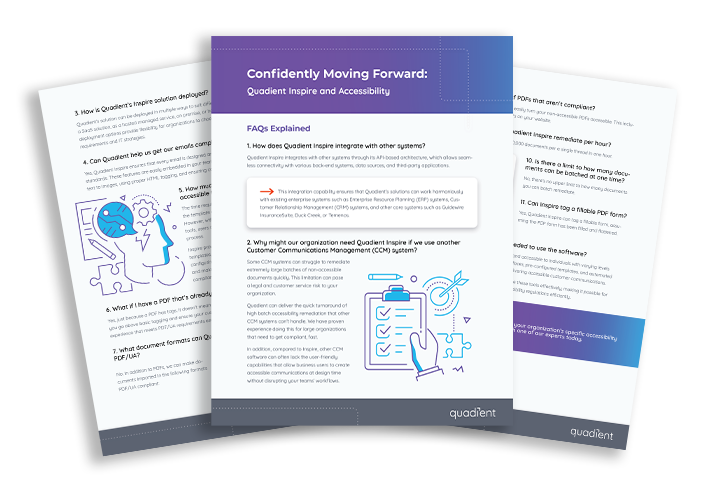
Digital platforms fail to meet customer expectations
The recent global pandemic led to a remarkable rise in digital banking, as branches closed and customers clamored for non-cash payment methods. One unfortunate consequence of this was that it proved what many had long feared – that banks' digital platforms just weren’t ready to deliver the experience customers require.
Negative anecdotal evidence is backed by statistics, with McKinsey showing just a 9% and 5% swing towards internet and mobile banking take-up, respectively, from western developed countries[1]. With a global investment of well over a trillion dollars[2], the numbers aren’t justifying the investment.
Digital banking has failed to meet the expectations of customers for one reason – the core principles that drove investment were never intended to meet them. Instead, they were cost-focused, with the aim being to reduce the need for highly expensive branches through the development of low-cost, self-service options. Global branch closure numbers suggest that this objective has been reached, but at what cost? A sub-par, self-service experience doesn't encourage customers to move to digital channels as their primary source.
Three principles to rebuild and refocus
So, is digital banking beyond redemption? Well, no - the foundation is strong and can be built on. The direction does need to change though to replicate the more tailored and personalized experience that customers demand. This change in direction can be achieved with three new core principles that encourage long-term success:
Principle #1: One-size-fits-one service
Currently, the entire digital banking platform is a one-size-fits-all attempt to deliver generic digital services. These services are built by digitally native experts who have a deep understanding of how digital solutions work, and assume that others do too. This has led to the development of services built exclusively for customers with advanced digital knowledge. As the pandemic has shown, expanding into new segments with low digital maturity requires a completely different ruleset.
The new paradigm in personalization requires that we help customers who are digital novices – the ones that hold their computer mouse by its “tail” as though it were a real mouse, or who may be stepping out of their digital comfort zone in attempting to register their iPad. To them, the current size most certainly does not fit all. They require more self-service support, more of a hand-holding approach, and the ability to contact a real human for assistance if they have any questions. This, in turn, requires a different approach, where each screen is personalized based on a complete understanding of the customer, and their activities are monitored so that the support level can be tailored to their needs – a one-size-fits-one service.
Principle #2: Embrace invisible banking
Simplification isn’t a new concept – the KISS principle has been used in banking for many years, but the problem is one of perspective. When we develop solutions that only involve 15 steps and four days of elapsed time because we know how complex the behind-the-scenes systems and processes are, we tend to feel proud because those processes should have required more complexity. When viewed through the eyes of the customer though, this is not “keeping it simple."
Nobody looks forward to an evening handling their financial affairs with an air of gleeful anticipation. Today, many customers perform their financial tasks in dead time – the three minutes before their train gets in at the station, when they’ve finally run out of funny cat videos to watch on YouTube, or the spare five minutes between their last phone call and the next meeting. If a customer cannot get the result they need in this short period, regardless of the complexity of the task, the journey is not simple enough. Streamline further, automate everything, and only let the customer see what they absolutely have to see. The ideal digital banking service is almost invisible.
Principle #3: Share the knowledge
Traditionally, customers who need any type of personalized financial advice have had to contact the bank, then meet with a trained employee. Customer communications in banking were designed to support this behavior. As an example, if a customer became overdrawn, it was normal for the first notification from the bank to be a letter informing them that they were about to be charged for mishandling their finances. With a letter standing as the primary, mass-market communication method, and the letter unlikely to arrive until real-time advice is no longer valid, customers have become trained to contact the bank directly for personal support.
This retroactive approach, where the bank holds the knowledge, but keeps it hidden unless asked, does not meet customer expectations anymore. The availability of real-time, digital communication channels has led to an expectation that the banking relationship will be proactive, and that digital services will tell the customer what they need to know. In the case of our example, a smartphone push notification, a WhatsApp message, an SMS, or an email would inform the customer that they’re expected to overdraw their account, explain the financial cost of this, and offer ways to rectify the situation. The former increases short-term revenue, whereas the latter enhances the all-important long-term relationship.
Growing digital banking with personalized, proactive experiences
A one-size-fits-no-one approach to digital banking only serves the provider and is a poor replacement for the highly tailored service offered by skilled branch employees. If branch banking is to be reduced to the history books, the digital bank needs to continue to grow. This requires a new vision – one that is based on an understanding of customers' needs, and works to translate those needs into personalized, simple, and proactive experiences that add value to the customer relationship.
Discover how you can share rich, proactive two-way engagements with your customers using Inspire Digital Advantage Suite.
[1] https://www.mckinsey.com/industries/financial-services/our-insights/a-global-view-of-financial-life-during-covid-19
[2] https://www.accenture.com/_acnmedia/pdf-102/accenture-banking-does-digital-leadership-matter.pdf








